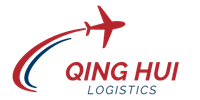
Clothing to the United States air freight transportation plan
- Time of issue:2025-07-26
Clothing to the United States air freight transportation plan
- Time of issue:2025-07-26
When planning air freight transportation for clothing to the United States, it’s essential to understand the intricacies of logistics, customs procedures, and the specifics of air cargo operations. The process involves numerous steps, each critical to ensuring the timely and cost-effective delivery of products. This article will explore the key components of a clothing air freight transportation plan to the United States, covering everything from choosing the right freight service to navigating customs clearance and final delivery.

Understanding Air Freight for Clothing
Air freight is a fast and reliable method for transporting goods, especially for time-sensitive deliveries. When shipping clothing, this mode of transport is particularly beneficial for businesses looking to get products to the market quickly, especially in industries like fashion, where trends evolve rapidly. Air freight allows companies to minimize delivery times and reduce the risks associated with delayed shipments.
Choosing the Right Air Freight Service
The first step in air freight transportation is selecting the appropriate air freight service. There are several options available, including direct services, consolidated freight, and express services. Direct services are the fastest and most efficient, but they can be expensive. Consolidated freight, where multiple shipments are combined into one cargo load, is more economical but takes longer. Express services are ideal for urgent shipments but are typically more costly.
For clothing shipments, businesses should consider factors such as the volume of the shipment, the urgency of the delivery, and budget constraints. It’s crucial to choose a service that aligns with both the operational needs and cost considerations of the business.
Packaging and Labeling for Air Freight
Proper packaging is a critical aspect of air freight shipping. Clothing items need to be packed efficiently to prevent damage during transit. This may involve folding, bagging, or even using custom boxes for delicate or high-value items. Additionally, packaging must comply with air freight regulations, including weight and size restrictions, as well as any requirements for hazardous materials (if applicable).
Labeling is equally important, as it ensures that all items are properly identified throughout the shipping process. Each package should have clear, accurate labels with information such as the consignee's name, destination address, and tracking number. It’s also advisable to include a packing list detailing the contents of each package to help streamline customs processing and avoid any confusion.
Customs Clearance
One of the most critical components of international air freight shipping is customs clearance. When shipping clothing to the United States, it’s essential to understand the specific customs requirements for textiles and apparel. The U.S. Customs and Border Protection (CBP) agency enforces strict rules on the importation of clothing items, including the classification of goods, tariffs, and taxes.
It’s essential to provide the correct documentation for customs clearance. This includes the commercial invoice, which outlines the value and description of the goods, as well as the bill of lading, which details the shipment’s transportation details. Additionally, any necessary certifications or licenses, such as those required for specific fabrics or textiles, should be included to avoid delays at customs.
To ensure compliance with U.S. import regulations, many businesses choose to work with a customs broker. A broker can help navigate the complex customs process, ensuring that all required paperwork is in order and that the shipment clears customs without delays.
Transit Time and Delivery
The transit time for air freight shipments depends on the route and the service chosen. Generally, air freight is the fastest shipping option, with typical transit times ranging from 3 to 7 days, depending on the distance and whether the shipment is using a direct or consolidated service. However, it’s essential to account for any potential delays, such as those caused by weather, flight schedules, or customs inspections.
Once the shipment arrives in the U.S., it will typically go through a customs inspection before being transferred to a local distribution center or warehouse. From there, the goods can be delivered to the final destination via ground transport. Businesses should have a reliable logistics partner in place to ensure that the final delivery is completed on time and in good condition.
Cost Considerations
The cost of air freight transportation for clothing varies depending on several factors, including the size and weight of the shipment, the chosen service type, and any additional fees for customs clearance or insurance. It’s crucial to factor in all costs, including hidden fees such as storage or handling charges at the airport.
Businesses must weigh the benefits of fast delivery against the higher costs associated with air freight. In some cases, a combination of air and sea freight or ground transport might be a more cost-effective solution, depending on the urgency and volume of the shipment.
Risk Management and Insurance
Shipping clothing by air involves inherent risks, such as damage, theft, or loss of goods. To mitigate these risks, it’s advisable to purchase insurance coverage for the shipment. Many air freight carriers offer insurance options, which can protect the business against financial losses caused by unforeseen circumstances.
The cost of insurance is typically a small percentage of the shipment’s total value and is well worth the peace of mind it provides, especially for high-value or fragile clothing items.
Conclusion
Air freight transportation for clothing to the United States is a complex process that involves careful planning and attention to detail. From selecting the right service to ensuring compliance with customs regulations, each step must be executed meticulously to ensure a smooth shipping experience. By understanding the key components of air freight logistics—service options, packaging, customs clearance, and delivery—businesses can streamline their operations and get their clothing products to market quickly and efficiently.
As the fashion industry continues to demand faster turnaround times and reliable delivery options, air freight remains a key component of global logistics, offering businesses the ability to stay competitive in a fast-paced environment.
ADDRESS: 101 Qinghui International, No. 160 Qisha Ferry Road, Shatian Town, Dongguan City, Guangdong Province
CONTACT NUMBER: 13620081619 / 18680404400
CONTACT PERSON: Shelly / Alan
E-mail: shelly@qhgj56.com
alan@qhgj56.com
Copyright © 2025 QH INTERNATIONAL LOGISTICS LIMITED

